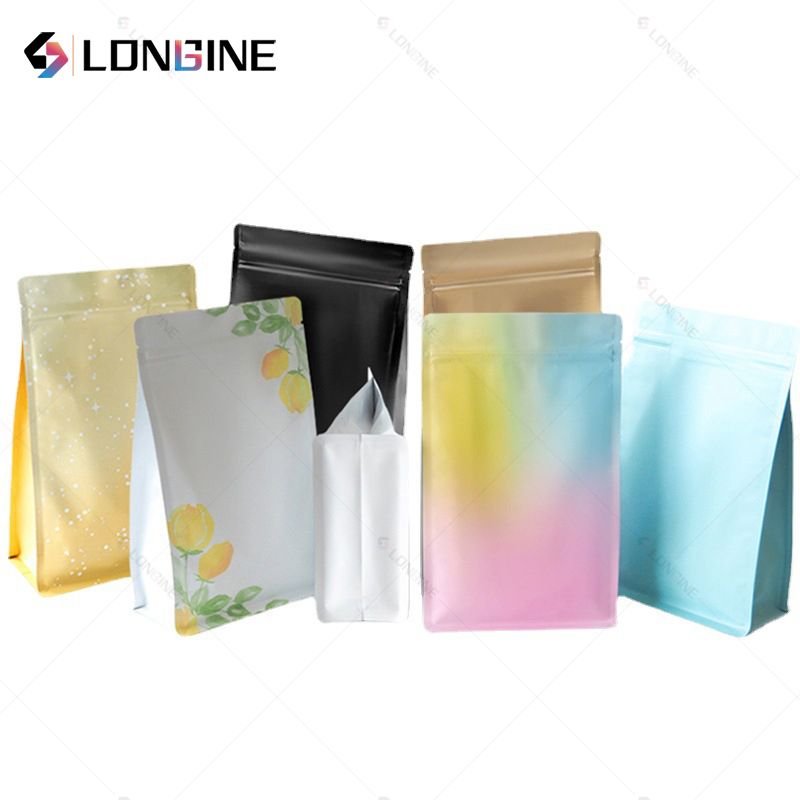Walking down the coffee aisle or scrolling through an online coffee shop can be overwhelming—dozens of bags of coffee in different shapes, colors, origins, and roast levels. If you're just getting started with home brewing, you might be wondering: Which bag should I pick? What’s the difference between a light roast from Ethiopia and a dark roast from Colombia? And how can you tell if a bag suits your brewing method?

1. Understand What’s in a Bag of Coffee
Before you buy your next bag, it’s important to understand what a typical bag of coffee contains. Here’s what you’ll usually find:
Weight: Common sizes are 12 oz (340g), 16 oz (1 lb), or 5 lb for bulk buyers.
Beans: Whole bean or ground
Roast Level: Light, medium, medium-dark, or dark
Origin: Single-origin (one farm or country) or blend (multiple regions)
Processing Method: Washed, natural, or honey-processed
Roast Date: Indicates freshness
All of these details can influence how your coffee tastes and performs in your brewing device.
2. Choose the Right Roast Level for Your Taste
The roast level is one of the biggest factors influencing flavor. Here's a breakdown:
Light Roast
Flavor: Bright, acidic, floral, fruity
Color: Light brown
Best for: Pour-over, AeroPress, manual brewing
Notes: Retains more of the bean’s original origin character
Medium Roast
Flavor: Balanced body, chocolate, nuts, caramel
Color: Medium brown
Best for: Drip coffee, French press, espresso
Notes: Most popular for its smoothness and versatility
Dark Roast
Flavor: Smoky, bold, bitter-sweet
Color: Deep brown to black
Best for: Espresso, Moka pot, milk-based drinks
Notes: Roasting overpowers origin flavors; more body, less acidity
Tip: If you like lighter, more acidic coffee, go for light or medium. If you enjoy richness and body, dark roasts are ideal.
3. Know Your Grind Type (Or Go Whole Bean)
When choosing a bag of coffee, check whether it's whole bean or pre-ground. Whole bean gives maximum freshness but requires a grinder. Pre-ground is more convenient but loses aroma faster.
Common grind sizes:
Coarse: French press, cold brew
Medium: Drip machines, pour-over
Fine: Espresso machines, Moka pot
Extra Fine: Turkish coffee
Pro tip: If you're serious about freshness, always buy whole bean and grind just before brewing.
4. Understand Origin and Flavor Profiles
Where your coffee comes from affects its flavor dramatically. Different regions offer distinctive profiles:
| Origin | Flavor Notes | Body/Acidity |
|---|---|---|
| Ethiopia | Floral, citrus, tea-like | Light, high |
| Colombia | Caramel, chocolate, balanced | Medium |
| Brazil | Nutty, low acidity, creamy | Heavy, low |
| Guatemala | Spicy, cocoa, full-bodied | Medium |
| Sumatra | Earthy, herbal, low acidity | Heavy |
| Kenya | Berries, bright acidity | Medium-high |
Single-origin coffees offer traceability and unique character, while blends create consistency and balance.
5. Decide Between Single-Origin vs Blends
Single-Origin
Sourced from one location
Great for tasting origin-specific flavors
Ideal for pour-over and light roasting fans
Blend
Mix of beans from multiple origins
More balanced and predictable
Great for espresso and milk-based drinks
Beginner tip: Start with blends for consistency, then try single-origin coffees to explore different flavor profiles.
6. Check the Roast Date for Freshness
Coffee starts to lose flavor within weeks of roasting. A freshly roasted bag of coffee will usually have:
Roast date printed clearly
Peak freshness window (7–30 days after roast)
A degassing valve to let CO₂ escape while keeping air out
Avoid: Coffee with “best by” dates only—it’s likely stale.
7. Choose the Right Packaging
Good packaging is key for keeping coffee fresh. Here’s what to look for:
One-way valve: Prevents oxygen from entering
Resealable zipper: Keeps the aroma in
Opaque, airtight material: Blocks light and air
Sustainable options: Compostable or recyclable bags
Bonus tip: Store your coffee in a cool, dark place—never in the fridge or freezer unless it’s vacuum-sealed.
8. Match Your Coffee to Your Brew Method
| Brew Method | Best Roast | Grind Size | Bean Preference |
|---|---|---|---|
| French Press | Medium | Coarse | Nutty, chocolatey blends |
| Pour Over | Light-Medium | Medium-Coarse | Fruity single-origins |
| Espresso | Medium-Dark | Fine | Full-bodied blends |
| Cold Brew | Medium-Dark | Coarse | Smooth, low-acid beans |
| Drip Machine | Medium | Medium | Balanced blends |
Beginner tip: Pick one brew method and experiment with different beans before switching brewing styles.
9. Ethical and Specialty Certifications
Looking for quality, sustainability, or ethical sourcing? Pay attention to labels:
Fair Trade: Ethical wages for farmers
Organic: Grown without synthetic pesticides
Rainforest Alliance: Sustainable farming practices
Specialty Grade: Cup score of 80+ from Q graders
These certifications aren’t always necessary but can help guide your choices if you care about sourcing and sustainability.
10. Frequently Asked Questions (FAQ)
How many cups can I brew from a standard 12 oz bag of coffee?
Around 24–36 cups, depending on your brew strength and method.
Is it better to buy whole bean or ground coffee?
Whole bean stays fresh longer and gives you control over grind size. Ground coffee is more convenient but stales faster.
How long does a bag of coffee stay fresh after opening?
Around 2–3 weeks if stored properly in an airtight container.
Can I use espresso beans for regular coffee?
Yes. “Espresso” is typically a roast profile or blend, not a different bean. Just grind it to suit your method.
What’s the best bag of coffee for beginners?
A medium roast blend is usually a safe and balanced starting point.
Choosing the right bag of coffee doesn’t have to be intimidating. With just a little knowledge of roast level, grind size, origin, and brewing method, you can find a coffee that perfectly matches your taste and setup.
Start simple: go for a medium roast blend in whole beans, and grind it fresh. As your palate grows, explore single-origins, new brew methods, and diverse roast levels. With every bag, you’re one step closer to brewing your perfect cup.

